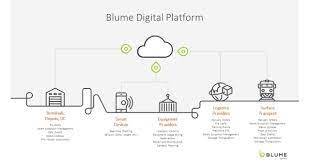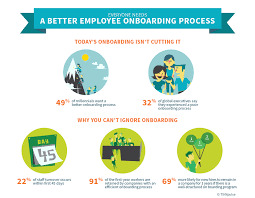Don't wanna be here? Send us removal request.
Link
Polaris Transportation Application Centralizes Independent Links in the Supply Chain Polaris is distinguished by its sophisticated robotics automation. It is Canada's largest privately-owned LTL carrier, serving every zip code in the United States as well as every postal code in Canada. It transports over 300,000 orders to and from the United States each year.
Freightlens, a Polaris Transportation Group technology, was inspired by the company's LiFT digital platform (Linked insights For Transportation). For digital processing, the network has several layers and unifies separate connections to supply chain participants.

Polaris is a transportation and logistics business that specializes in dry goods cross-border shipping between the US and Canada. Polaris is distinguished by its sophisticated robotics automation. It is Canada's largest privately-owned LTL carrier, serving every zip code in the United States as well as every postal code in Canada. It transports over 300,000 orders to and from the United States each year.
The goal with Freightlens is to provide seamless integration to the company's carrier partners, as well as clients (shippers, brokers, manufacturers), and suppliers, allowing them to connect to the LiFT platform and use applications for process reporting, invoicing, real-time status notifications, and other functions throughout the supply chain.
"We want to create a digital platform that offers the ease of doing business with full transparency throughout the supply chain freight lifecycle," stated Dave Brajkovich, Chief Technology Officer for Polaris.
"The Freightlens technology is a win-win and can work like gears and cogs in a well-oiled machine without resorting to unnecessary middleware components. Today the Logistics market space has an opportunity to digitize, but only if people don't work in silos, which has been a problem for the industry."
#logistics#transportation#carrier partners#middleware components#well-oiled#supply chain#united states
0 notes
Link
Grantchester C Change LLC invests in UCAP Power.
Grantchester Capital Change Group (GCC), a worldwide private equity group focused on electrification, infrastructure, and renewable energy generation, invests in UCAP Power, Inc., which will support UCAP's entry into the ultracapacitor market through the acquisition of Maxwell Technologies. Maxwell's non-dry electrode, ultracapacitor businesses, related assets, and the Maxwell trademark are included in the acquisition.
Liz Griggs, Managing Partner and CEO of Grantchester Group, comments, “We are excited to announce our investment into UCAP and their acquisition of Maxwell Technologies. We believe that with the global transition to electrified vehicles for commercial and consumer use, the innate benefits ultracapacitors and their current utilization in advance power train will drive significant growth as industry research forecasts market opportunities to be more than $7 billion annually by 2027.”

Grantchester's growth strategy is focused on increasing its investment in energy storage and potential for vehicle electrification. It is well-positioned to create value and growth for manufacturing and distributing energy vehicles and infrastructure assets for firms. Grantchester's management team has a track record of successfully operating both public and private enterprises, collaborating closely with portfolio companies, and leading, scaling, and investing in sustainable energy with seasoned industry partners.
"We sought the UCAP investment opportunity for their strong visionary leadership and strategic renewable energy acquisition of Maxwell Technologies,” comments Russell Read, Managing Partner of Grantchester. “The growth potential for UCAP is tremendous as the global vehicle electrification, and renewable energy sectors expand. Ultracapacitors are emerging as a sought-after green energy source currently utilized in thousands of applications, including those that commonly expose typical battery technologies to failure or safety issues."
0 notes
Link
Many firms, including Google, Microsoft, and others, are shifting from annual performance evaluations to more real-time performance analyses in order to make more prompt judgments.
Human resource functions entail more than just hiring and onboarding. The human resources area has seen a fundamental transformation with the introduction of HR analytics. HR analytics are used by businesses to analyze employee turnover, optimize the personnel supply chain, extract insights to assist decision-makers, and more.

HR analytics, when integrated into a company's entire strategy, can improve productivity, performance, and profitability. Furthermore, HR analytics provides a unified view of the workforce and talent data to drive business activities.
HR Analytics for the Appraisal Process
Predictive analytics: It is used in the workplace to identify trends at both the individual and team levels. The algorithms linked with them can provide objective insights about job preferences and performance determinants.
Real-time analytics: Many firms, including Google, Microsoft, and others, are shifting from annual performance evaluations to more real-time performance analyses in order to make more prompt judgments. This provides a more comprehensive measure of performance and aids in identifying red flags and predicting which employees fall into the flight risk category.
Engagement: HR professionals can use analytics to identify engagement activities that have a direct or indirect impact on employee performance. It has two benefits: it pushes organizations to invest more in performance-building initiatives and it helps to define a metric that correlates performance with engagement.
Succession: Using HR analytics for performance appraisal and evaluation also means that HR may utilize the same data for succession planning. It can predict promotions, transfers, and professional splits in advance.
0 notes
Link
Blume Global Introduces Dynamic Map of the Supply Chain World Blume Maps offers reliable lead times, real-time shipping position, and ETAs for over-the-road (LTL, FTL, and parcel) freight, as well as ocean, air, and rail freight. When shipments are late, the solution also offers alternate modes, carriers, and routes.
Blume Global, a leader in digital supply chain solutions, has declared Blume Maps, a digital twin of the world's supply chain powered by patented technology that generates accurate lead times and ETAs.
Planning a freight shipment's route and changing course mid-trip if complications occur is as easy as using a navigation app on a family road trip with Blume Maps.
Blume Maps offers reliable lead times, real-time shipping position, and ETAs for over-the-road (LTL, FTL, and parcel) freight, as well as ocean, air, and rail freight. When shipments are late, the solution also offers alternate modes, carriers, and routes.
Blume Maps provides an ever-growing database of over 1.5 million global places, ocean voyages, train journeys, flights, and over-the-road moves (first and last mile) curated over decades to feed Blume's lead time and dynamic ETA engine.

Blume Maps allows customers to:
Plan: Plot routes based on variable lead times, cost effects, and intelligent historical data, keeping an eye on adjustments as the ship date approaches. Estimate transit times using intelligent schedules and locations, as well as situational details.
Track: Ensure orders arrive on time with end-to-end visibility and constantly updated ETAs, and receive alerts when orders are late or early.
Adjust: View recommended alternative modes, airlines, service levels, and routes to get shipments back on track when they're late.
"International shipping remains fragmented and complex, and challenges ranging from the current Suez Canal blockage to ever-increasing, disruptive weather events show there is a need for unimpeachable worldwide supply chain execution and visibility," stated Pervinder Johar, CEO of Blume Global. "Blume Maps eliminates supply chain blind spots throughout the world, no matter the mode."
0 notes
Link
Email security software should also allow for customization so that it is tailored to the risk appetite, employee preferences, and business environment.
Security leaders have a lot to think about when developing a cybersecurity strategy. There are several threat vectors, dozens of ‘types of data to secure, thousands of products to choose from, and frequently a restricted budget to work with.
A spear-phishing attack could compromise data. Malware embedded in a single malicious attachment has the potential to infect an entire company’s network. By emailing spreadsheets to their own email accounts, insider threats could effortlessly exfiltrate data for financial benefit. That is why email is the most significant threat vector for security and IT leaders and why selecting the appropriate email security software is so vital.

Is It Easy to Deploy?
Cybersecurity solutions should make the employees’ and IT department’s lives easier. In the end, a time-consuming setup process costs time and resources. Worse, it may result in deployment failures, leaving the firm susceptible. That is why email security software should be simple to implement throughout the organization and integrate with several email clients without causing any administrative headaches. Before diving too further into the sales process, find out what kind of support the vendor offers, how long deployment takes, and–if feasible–speak with an existing client about their experience.
Is It Adaptable and Scalable?
The business tools must adapt as the organization develops and changes. This includes email security software, which should always function, regardless of the size of the organization. The email security software should alter as one scales up or down. Email security software should also allow for customization so that it is tailored to the risk appetite, employee preferences, and business environment. Too little flexibility is confining, while too much variety is exhausting (and could be resource-intensive).
Are Employees (And Data) Safe on Multiple Devices?
Since the emergence of COVID-19, businesses have become increasingly reliant on cloud computing, remote working, and home offices. It is difficult enough to secure a set of company workstations on company property. It is even more challenging to keep track of security on various desktop, laptop, and mobile devices spread throughout businesses, public spaces, and employees’ residences. Unprotected devices, on the other hand, are a serious security risk for the company. As a result, a good email security solution should work on every device employees can use to access company data.
#multiple devices#adaptable#scalable#cloud computing#organization#business environment#employees#company data
0 notes
Link
Automating the accounts receivables sooner than later will give the organization a competitive edge in attracting and appealing modern customers.
It is general knowledge that cash flow management is an essential component in the long-term survival of any firm, large or small. When a business expands, it is highly possible that sales will be held up in accounts receivables.

Businesses frequently extend credit to their customers beyond their agreed-upon terms in the hopes of increasing sales, and before they realize it, they are amid a cash crunch. One of the most common causes of cash flow problems is poor accounts receivable management.
While manual paper-based accounts receivable methods continue to dominate accounts receivable accounting, these outdated techniques have problems that limit a company's liquidity and working capital.
The Alternative to Manual A/R Processes
Technology is changing the way companies handle accounts receivables. Accounting responsibilities have never been easier than they are now due to accounts receivable software for businesses. The market for accounts receivable software is diverse, with options for a variety of enterprises.
Some are devoted to assisting small firms, where accounting responsibilities can be performed by the owner using self-employment tactics rather than engaging an accountant to do so. Some are tailored at more prominent businesses, with more extensive capabilities and features.
Advantages That Technology Brings to Accounts Receivable Software
Better Control Over Cash and Working Capital
It will be easier to manage and boost working capital after a company's A/R performance has enhanced and its cash position has improved. They may gain the insights they need to make investment decisions such as equipment purchases, facility expansion, personnel recruitment, and other investments to grow the firm with the help of accounts receivable software.
Improved Communication with Customers
Businesses would be able to communicate with customers more quickly if they used A/R software. Users may examine account information, attach bills, send emails, and make phone calls from a single interface. Another benefit is that all communications are saved and can be analyzed and reviewed afterward.
Enhanced Sales to Payment Cycle
One of the cornerstones to any business's success is getting paid as soon as possible for the services they deliver. Invoices can be issued automatically to customers using modern accounts receivable software, and a customer portal and bill pay function allow them to make payments sooner rather than later.
#payment cycle#customers#working capital#A/R process#accounts receivable#software#recruitment#technology#cash flow#management
0 notes
Link
Energy tech experts are continually innovating to discover and develop efficient and eco-friendly technologies to help the world meets its requirements for fuel. Well, fuel cells are today, giving a whole new and greener introduction to themselves. Not completely but replacing the traditional battery technology, the advanced and updated fuel cell is driving the electromobility today. Hydrogen fuel cells, especially, are gaining a lot of traction since hydrogen is a carbon dioxide-neutral energy carrier when it is obtained from renewable energy sources.
Why is a fuel cell given a lot of significance in the modern energy world? What makes the fuel cell a key differentiator? Swell the answer to these questions is that the researchers say that a hydrogen fuel cell would pronounce extra durability, or in other words, it lasts longer. In addition to this, a hydrogen fuel cell has the capability to produce power without the need for carrying out combustion. Hydrogen atoms would split themselves up to generate electric power. Since the process of electrolysis is approached to generate power, a hydrogen fuel cell needs no combustion.

In order to make the modern hydrogen fuel cell technology a perfect fit in the energy industry of today, researchers are making use of the novel technique, which is said to be cathode sputtering. The power generation is combined with this novel technique to create an adhesive layer. With the application of consequent treatment methodologies, a porous structure can be attained. Also, this makes induces the feature of self-reliance and self-sustenance and also cuts time.
Energy tech experts believe that this technology is highly scalable and profits the industry in a large amount. Due to extensive durability capability, hydrogen fuel cells pronounce environment sustainability, and eventually, industrial optimization. Practically, a hydrogen fuel cell is expected to hold a lot of value in streamlining and handling the massive volumes of road traffic as well.
#fuel#hydrogen#technology#power generation#self-reliance#energy world#methodology#carbondioxide#energytech
0 notes
Link
When a team is understaffed, it is common for extended working hours, increased stress levels, and tiredness to occur. When this happens, the entire team and project suffer, which may result in revenue losses.
Workforce management is critical to an organization's success in the commercial sector. Workforce management, in its most basic form, refers to a collection of practices designed to maximize employee performance and productivity.
Despite the benefits it can give to business owners or managers, there are several frequent workforce management difficulties they should be aware of right away. Knowing how to identify and handle these difficulties can assist them and their workers in achieving their company's goals and objectives.
Key workforce management concerns that one should address in their organization as a business owner or manager are as follows:

Shortage of Talent
One of the most typical workplace management concerns to consider is a talent shortage. It might be challenging to choose the best time to recruit a new team member to assist with team responsibilities. Not to mention the fact that there may be a shortage of active job seekers on the market, and the recruitment process can be difficult.
When a team is understaffed, it is common for extended working hours, increased stress levels, and tiredness to occur. When this happens, the entire team and project suffer, which may result in revenue losses.
To handle this issue and ensure that one is not understaffed, it is a good idea to build one's network by developing ties within specific industries. This can be accomplished through social media, employee referrals, instructional programs, and even industry alliances. If one is too busy, they can delegate this task to a dependable staffing partner to ensure that it is completed correctly.
Furthermore, whether one is a startup or an established organization, if one opts to handle the recruitment process oneself, one may solve the issue of talent shortage by simplifying recruitment. Making a job description, interviewing applicants, and requiring them to complete a test to determine their suitability for the job, for example, can all assist in boosting the organization's recruitment efforts.
Reduced Performance Levels
Employees may endure instances when they are not as productive as they should be. This can be attributed to a number of issues, including a lack of direction, low attendance, insufficient training, high job expectations, little feedback from superiors, a bad work-life balance, and even a lousy working environment. When employees are unproductive, it can have a substantial influence on one's company's overall productivity and capacity to flourish as a thriving firm.
0 notes
Link
The freight industry is ready to improve productivity, as data on the ability of private fleets can now be readily available. As data is involved, cloud-based companies can utilize cloud solutions to store this information and serve as repositories for all transportation, docking, and storage data to improve operational performance.
The most advantageous aspect of technology integration is that it does not entail extensive investment but agile innovation that makes all operations more competent and smart. Here are several developments in technology that are changing paradigms of the freight forwarding industry.

Solutions focused on cloud
The freight industry is ready to improve productivity, as data on the ability of private fleets can now be readily available. As data is involved, cloud-based companies can utilize cloud solutions to store this information and serve as repositories for all transportation, docking, and storage data to improve operational performance.
Internet of Things (IoT)
This technology, while apparently unclear, is capable of streamlining business processes on its own. The entire supply chain can be renovated, from fleet control to inventory management.
Improved transparency of IoT allows monitor and gain access to freight in real-time. In addition, the introduction of barcode adds protection, and predictive maintenance ensures maximum asset utilization and geo-enclosure guarantees that warehouse operators can effectively draw virtual boundaries to produce precise warnings and safeguard the cargo inside the perimeter.
Advanced Learning Machine (AML)
Using AML, logistics firms may detect trends and place this predictive understanding to make better business decisions. ML learns from its previous interface to build algorithms that increase tasks such as operations and security.
Data obtained from multiple points offers a broad image of approaching risks and creates potential strategies that will increase accountability and help save money, time, and even lives. For example, AML can differentiate between ports and routes that can be cost-effective and efficient for firms.
Connected requests
In the freight forwarding sector, half of the fight has been active in effective connectivity. Reliable connectivity is essential to the industry, and with the resources linked there is no more wishful thinking. Linked technologies mainly eliminate contact barriers and minimize data transmission across oceans.
Technologies such as EDI (Electronic Data Interchange) work through these applications to allow the transfer of data in the blink of an eye. Mobile apps will now allow road data transfer that further simplifies communication.
0 notes
Link
It is critical for new employees to understand the company's goals and how their positions contribute to achieving them. This helps them understand how essential they are to the organization and how they can identify with and associate with the workplace culture.
What is the greatest approach to greet a new team member? Is it a box of corporate swag or a welcome kit containing crucial materials to assist them in getting started in their new position? After enticing a new candidate to accept one's job offer, one does not want them to have a difficult first day on the job.
The onboarding process is a critical component of a new hire's experience. The new employee expects to be productive quickly as they transition into a new career situation.

Being the new kid in town is never easy. Often, one does not know anyone and has no idea how things are done. The same goes for new hires. Companies want to ensure that new employees feel welcomed, have everything they need to get started and are at ease in the workplace.
Sharing the Vision and Goal of the Company
It is critical for new employees to understand the company's goals and how their positions contribute to achieving them. This helps them understand how essential they are to the organization and how they can identify with and associate with the workplace culture.
Introducing the Team
Nothing is more infuriating than working with coworkers one does not know or has never met. Employers should introduce new employees to team members, particularly those who will be working in the department for which they were employed. Giving new workers a full overview of the firm structure will make it easier for them to interact effectively. This can be accomplished by creating a team directory page on the company website or by creating a film that provides a brief summary of each team member.
1 note
·
View note
Link
A data breach occurs when sensitive, confidential, or otherwise protected data is accessed or disclosed in an unauthorized manner during a cyber-attack.
Data breaches can occur in organizations of any size, from tiny firms to large multinationals. They may involve personally identifiable information (PII), trade secrets, or other proprietary information.
Personal information such as credit card numbers, Social Security numbers, driver's license numbers, and healthcare records is frequently exposed in data breaches, corporate data, customer lists, and source code.

Causes of a data breach
While data breaches come in various forms, they are virtually usually the result of a weakness or flaw exploited by cybercriminals to obtain access to an organization's systems or processes. Among the possible causes of a data breach are the following:
Insecure passwords Scams involving social engineering Malicious software or ransomware Phishing Hardware that has been lost or stolen (laptops, hard drives, mobile devices) Insufficient access controls Back entrances Insider dangers User blunders How to safeguard against data breach
There is no single security technology or control that will ultimately prevent data breaches. The most prudent method of preventing data breaches is through the use of common sense security practices. Among these are well-known security fundamentals, such as conducting periodic vulnerability assessments.
Penetration testing Putting in place proven malware prevention Employing robust passwords/passphrases Applying essential software patches consistently across all systems
While these measures will help protect an environment from breaches, information security experts also recommend encrypting critical data, whether on-premises or in the cloud. Encryption will prevent threat actors from accessing the actual data in the event of a successful breach into the environment.
Additionally, well-written security rules for employees and continuing security awareness training to promote and educate staff are additional strategies for preventing breaches and mitigating their damage.
These rules may incorporate notions such as the principle of least privilege (POLP), which requires employees to have the fewest possible permits and administrative licenses to fulfill their jobs.
Additionally, organizations should have an incident response plan in place for when an intrusion or breach occurs. Typically, this plan involves a systematic process for detecting, containing, and measuring a security event.
#security#environment#hardware#administrative#critical data#penetration#essentialbusiness#social engineering
0 notes
Link
Innovative new advances in solar energy technologies have enabled a more comprehensive range of practical and creative uses of solar energy. The demand for more affordable, sustainable energy means that solar energy companies will continue to develop new solar cell technologies and battery life extensions. Advanced solar energy and storage technologies will also enable the design of smaller, more powerful solar cells that can be used in more innovative ways to improve people's quality of life.
There are numerous ways to harness solar energy. The two primary methods of harnessing solar power are photovoltaics and solar thermal capture. Photovoltaics are far more prevalent in small-scale electricity projects, whereas solar thermal capture is typically reserved for large-scale electricity production in utility-scale solar installations. In addition to generating electricity, solar thermal projects with lower temperature variations can be used for heating and cooling. Solar energy is one of the world's rapid-growing and cheapest energy sources, and its adoption will continue to accelerate in the coming years. In addition, the economic benefits of solar continue to improve as solar panel technology advances, adding to the environmental benefits of choosing a clean, renewable energy source. There are a few good and creative applications of solar energy listed below.

Solar skin
MIT spin-off Sistine Solar developed novel solar technology they call “solar skin” that applies custom designs to solar panel systems. Using imprinted custom images, solar skin takes the appearance of any solar panel and gives it a unique look. The technology selectively utilizes light filtration to illuminate the solar panel and display a vibrant image simultaneously. For example, a logo or advertisement image can be customized to display business branding.
Solar-powered roads
Roads with solar panels can help reduce pollution and have the ability to light up at night, melt snow and ice during the winter, and generate clean energy. Solar panel efficiency, panel angle, tracking methods, sunlight hours, and temperature are all things that impact the production of power. Concrete is less flexible and better supports solar cells. Several corporations and transportation organizations are testing these solar-powered roadways' viability.
Solar fabrics
Flexible, small solar panels can now be incorporated into the fabric. Clothing with embedded solar filaments keeps people warmer in the winter, provides electricity, and helps power other portable electronic devices. Additionally, some practical applications include the illumination of buildings' facades, awnings, curtains, and the heating of car seats.
Solar power storage
Scientists are developing innovative methods for storing energy produced by solar PV systems. Most electricity generated from solar power is usually sent to the grid instead of being held. New ways to keep this electricity at a larger scale are being developed. In other words, molten salt storage is a potentially interesting idea, where the solar collector uses molten salt instead of a heat transfer oil.
#solar power#solar fabrics#solar-powered#solar skin#pv systems#electricity#awnings#solar cells#testing
0 notes
Link
When an organization’s purpose and vision are clearly defined and practiced by its leaders and managers, employees will invest in the company’s mission and understand how projects and actions are coordinated to its goals.
Poor employee engagement is an issue that is prevalent in organizations of all sizes globally. HR professionals are tasked with measuring and solving employee engagement challenges, even though low engagement is a significant productivity and profitability problem.

Here are five HR strategies for better employee engagement:
Invest In Wellbeing
Take steps to build a healthy workplace by introducing an employee assistance program (EAP), train mental health first aiders, and encourage healthy eating and exercise to optimize staff’s wellbeing. Also, check on the organization’s culture and the behaviors it expects employees to demonstrate.
Communicate Regularly
HR professionals need to start communicating news more regularly wherever employees are, digitally or physically. Steps like using intranet or HR systems or putting posters in shared spaces will help keep employees updated on changes in HR policies, the good news about clients, or birthdays.
Managers handling remote teams will need to make full use of digital tools and schedule consistent check-ins with their direct reports and management associates.
Define the Organization’s Purpose
When an organization’s purpose and vision are clearly defined and practiced by its leaders and managers, employees will invest in the company’s mission and understand how projects and actions are coordinated to its goals.
Empower Employees
Empower, support, and trust employees to work autonomously and help them if they need more guidance. HR professionals should speak to the manager if they see micromanagement in action. Help them understand the management styles’ outcomes and help them create a strategy to trust and assign more authority to their employees. HR team
Invite Feedback
Technology has made it easier for employers to continually seek and gather employee feedback. However, such technologies will have less effect if leaders do not value their staff’s opinions and do not respond to their views.
#invite feedback#organizations#empower employees#managers#hr proffessionals#technologies#hr team#hr strategies
1 note
·
View note
Link
Companies that do not follow the automation trend may face miscommunication, disorganization, inefficient processes, and increased staff involvement that could lead to burn-out.
Today, many businesses are continuing to outsource their management and accounting activities more regularly. Cutting overhead and strengthening financial leadership is essential to the sustainability of both companies. By knowing where the market is now and where it is going, businesses will determine if outsourcing is the right decision for the company.

Finance and Accounting Outsourcing Trends
Real-Time Finance and Accounting
The finance and accounting industry gradually shift into digital space, making it easier to keep financial records and books up to date. Due to the availability of fully automated accounting platforms, accountants can help update the accounts any time a transaction occurs. Companies should consider their financial status and make data-driven decisions using the current financial information available.
Safe Audit Preparation
Monitoring of audit trails will remain relevant. If one uses paper-based accounting information, they can turn to record processing systems or accounting software that will categorize everything. This makes it possible to schedule audits of the financial statements nearly instantaneously.
Advanced Financial Modelling
Advanced technology has made it easier for financial and accounting professionals to develop more precise economic models than ever before. Without a prompt and reliable cash flow forecast, the business can face potential difficulties and surprises, which is why financial modeling is so critical. By building financial models with a wider variety of inputs, firms would forecast future results and prospects more effectively and prepare accordingly.
Highly-Sophisticated Automation
Companies that do not follow the automation trend may face miscommunication, disorganization, inefficient processes, and increased staff involvement that could lead to burn-out. All this could turn a firm away from the core role and lead to higher running costs. Machine learning and artificial intelligence are also main trends in finance and accounting. For example, AI may help businesses effectively gather big data, detect emerging business risks, and provide feedback to enhance their performance. Outsourcing the finance department will allow you to remove conventional accounting approaches that focus on manual financial reporting and replacing them with automated workflows.
#financial modelling#highly-sophisticated#safe audit#real-time#finance#accounting#audit preparation#business
0 notes
Link
According to a study, it was found that about 27 percent of accidents involving one truck and passenger vehicle were rooted in brake problems, which is more than those caused by speeding and driver fatigue combined.
Managing a fleet is not an easy task. Several things go into fleet management, and one will need to keep track of each of them to make the fleet’s operations as successful and advantageous as possible.
Fleet maintenance management is the practice of maintaining a fleet of commercial vehicles proactively, rather than merely repairing them when they fail. Here are a few benefits that fleet businesses will enjoy when implemented with reasonable fleet maintenance procedures.

Better Fleet Safety
There is nothing vital than fleet safety as safe fleet impacts each aspect of the business—from the workforce to legal to consumer confidence to the bottom line. If one is not correctly maintaining tires, brakes, coupling devices, and other mechanical systems and components can cause trouble.
According to a study, it was found that about 27 percent of accidents involving one truck and passenger vehicle were rooted in brake problems, which is more than those caused by speeding and driver fatigue combined. For all commercial fleets, safety needs to be a top main concern. As problems such as tire blowouts and brake failure can be seamlessly addressed with proper fleet maintenance, one is overdrawn to the business, drivers, and others to make sure that the vehicles are in working condition each time they hit the road.
Fleet Reliability
One can think of the loss incurred if a vehicle is out of commission due to repair work. The loss is suffered in productivity, staff-hours spent as the drivers wait until the vehicle is towed, and the expenses associated with any goods or equipment damaged. Proper maintenance leads to some mechanical problems. If one wants to keep the vehicles running reliably, then they have to be proactive about repairs at all times.
Fewer Compliance Issues
There are a lot of state, federal, and local laws that a fleet has to consider. The business has to stay on top of regulations reporting, inspections, registrations, safety scores, and others. Providentially, good fleet maintenance can lead to a few compliance issues.
#fleet reliability#fleet safety#vehicles#fleet maintenance software#logistics#technologies#technology
0 notes
Link
Each year, numerous firms worldwide suffer billion-dollar losses as a result of identity fraud.
Identity theft occurs when a fraudster steals one’s identity and obtains access to his PII (personally identifiable information) to commit fraud. Date of birth, address, driver's license, bank account information, online passwords, and social security number are all examples of sensitive information obtained by fraudsters to conduct fraud.

The followings are the five most common methods of identity theft:
Phishing
According to Consumer Affairs, phishing via voicemails, texts, and emails is a typical method for cybercriminals to execute identity-related fraud. To accomplish this sort of fraud, impostors pose as a legitimate business and convince a victim to open a phishing email or text message. When a receiver hits a malicious link, the malware begins installing in the background, freezing the system and revealing crucial information.
The scammer pretends as a representative of the National Security Department in the preceding case. The email instructs the recipient to click on a link to verify their identity. When the recipient hits the link, a malicious script is activated in the background, providing the fraudster with critical information.
Breach of Data
When a cybercriminal infiltrates a data source and obtains sensitive information, this is referred to as a data breach. Cybercriminals devise a method of gaining access to a business's computer network to steal personally identifiable information.
Several critical reasons for data breaches include the following:
Inadequate qualifications Vulnerabilities in software or applications Physical Attacks User mistake, such as incorrect setting Vishing
Vishing or voice phishing is a standard method for fraudsters to gain personal information. Cybercriminals typically contact businesses through telephone, posing as legitimate entities such as banking institutions or payment service providers. The objective is to persuade individuals to share their personal information.
Utilizing social media to make an impression
Businesses nowadays make use of social media to market their services or products.
Pharming
Pharming is a type of internet fraud that makes use of malicious code and phony websites. A cyber attacker installs malicious code on the target's server, which automatically redirects the victim to a fake website without their knowledge or consent.
#pharming#physical attacks#cybercriminal#breach of data#business#identity thief#enterprise security#banking institutions
1 note
·
View note
Link
Employee appreciation is a vital component in engaging remote workers. Working remotely might worsen feelings of inadequacy in professionals who suffer from imposter syndrome. The key to a confident, high-performing workforce is to express gratitude on a regular basis.
Remote work can increase productivity, but it also introduces new difficulties that firms must handle in order to remain competitive. Communication, recognition, proper onboarding, and professional development are all easy to overlook. Managers tend to micromanage, which breeds distrust among their employees.
Appreciating Remote Employees
Employee appreciation is a vital component in engaging remote workers. Working remotely might worsen feelings of inadequacy in professionals who suffer from imposter syndrome. The key to a confident, high-performing workforce is to express gratitude on a regular basis.
2020Recognition, both social and monetary, is an excellent approach to fight negative emotions. In fact, social acknowledgment may be more successful than monetary acknowledgment in increasing levels of engagement and retention. Social recognition can enhance engagement by up to 55 percent. It also plays a significant influence in lowering turnover. After all, who would want to quit a company that appreciates their accomplishments? Social recognition has the ability to significantly boost NPS, overall employee performance, and even stock values.
Using Tools for Communication and Collaboration
Employees who work remotely may feel lonely and isolated. Establish a framework for frequent, structured communication among peers, as well as between managers and their direct reports, to avoid this. Check-ins on a regular basis encourage social contact and keep teams on track. It's all too tempting to interrupt someone's workflow with an impromptu phone call or to slip into the micromanagement pit.
If one can decide on a good meeting schedule, look at resources that can help them improve communication and teamwork. Chat apps like Slack and Google Chat, as well as video call systems like Google Meet and Zoom, will make the virtual work environment more interactive. These platforms make it easy to keep remote employees engaged in company decisions and meetings and to give them the same level of accountability as in-office employees. Project management software is also a good investment because it improves visibility and makes collaboration simpler. Overall, one should choose technologies that are simple to use; steep learning curves will deter remote workers from embracing new technology.
0 notes